It’s that time of year again, and the good people over at HubSpot have produced what is perhaps the most insight-filled inbound marketing report in the industry – State of Inbound. This inbound marketing report outlines the most insightful data of the year. This inbound marketing report outlines the most insightful data of the year.
Today, businesses must prioritise inbound marketing as a key aspect of their marketing efforts and operations. Regardless of whether you operate in a B2B or B2C setting, your potential and existing customers are not passive recipients of unsolicited emails, TV commercials, or direct mail. It is important to stay updated with inbound marketing trends, leverage your marketing channel, and embrace emerging trends to effectively engage and connect with your audience.
Instead, when they’ve got a problem that a business like yours can solve, they head online to find it – and inbound marketing is the number one strategy smart businesses use to ensure that they do.
Such is the dynamic nature of the modern internet that online consumer habits undergo constant changes. It's imperative to stay firmly abreast of the industry, current trends, and future expectations. This includes keeping up with social media marketing, video marketing, and utilising PPC or social media as effective marketing channels.
State of Inbound 2017 brings together data collected from more than 6,000 respondents in the world of inbound marketing. Brian Halligan, HubSpot CEO, marks two major changes that seem to be taking place as inbound continues to evolve: “Marketers are making the leap into visual content creation while salespeople are slowly shifting from the hard-seller stereotype to a more trusted advisor.”
That’s some great insight right there – as inbound marketers, we need to be focusing more and more on creating stunning visuals, while the sales team needs to be placing larger emphasis on educating prospects, as opposed to relentlessly going for the hard sell.
Great stuff, but State of Inbound 2017 is a lengthy document – so let’s now delve deep into the data and see what other important insights we can glean that should inform our inbound marketing methods as we head into the second half of the year.
Your marketing strategies must adopt inbound tactics like choosing the right content distribution channels, such as the optimal content marketing media format, to deliver your carefully curated content. It is essential to apply the right SEO strategy to maintain a positive relationship with both your users and the search engine. Additionally, staying informed about the state of inbound marketing and partnering with reputable inbound marketing companies can further enhance your marketing efforts.
Your marketing strategies must adopt inbound tactics like choosing the right content distribution channels to deliver your carefully curated content and apply the right SEO strategy to be on good terms with both your users and the search engine.
Check out the following blogs to learn more about Inbound marketing trends:
- Top Marketing Trends to Follow in 2023 for Success
- Top 5 problems inbound marketing solves for your business
- Inbound marketing tactics | how to attract buyers
The State of Marketing and Sales
First, let’s consider priorities.
To the uninitiated, it is often assumed that inbound marketing is primarily concerned with growing website traffic with marketing automation or other digital marketing methods.
Whilst it’s most certainly true that driving traffic is one huge benefit of good inbound marketing, State of Inbound 2017 reveals in no uncertain terms that its main purpose is to convert leads into customers. Make sales, in other words, and improve the bottom line.
That’s what a whopping 70% of the marketers surveyed stated as their top priority. Check it out…
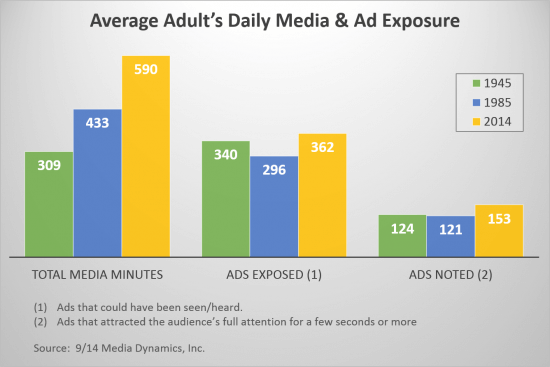
Inbound Marketing Priorities
One respondent to the State of Inbound 2017 survey highlighted that the inbound marketing tactics at the business where they worked were “focusing more on online presence such as industry directories, fixing and improving our own website, interacting with potential customers or people within the industry through online forums ... rather than print mags which don’t always reach our targets.”
This, indeed, marries with the overall trends from the survey, where improving SEO presence, creating more blog content, and content amplification were the top inbound marketing priorities of most marketers.
The implementation of the right SEO tactics should not be overlooked for your content marketing efforts, as it serves as a top marketing channel. Make sure your marketing teams have influencer marketing, social media advertising, and the importance of search engine optimization at the forefront of your inbound methodology.
“Thinking specifically about inbound marketing projects, what are your company’s top priorities?”
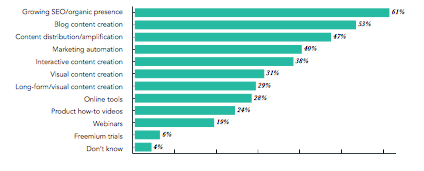
Here’s a big reveal. When asked, “In your opinion, what is the most overrated marketing tactic?”, by far and away the biggest answer was traditional, outbound, paid advertising, such as print and broadcasting.
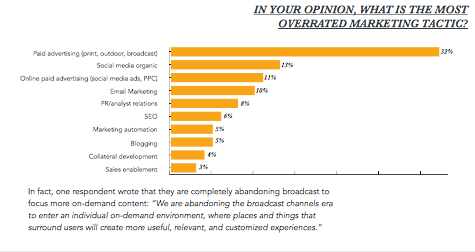
Sales Priorities
Perhaps unsurprisingly, “closing more deals” was the top priority for 71% of sales professionals. Coming in second and third was “improving the efficiency of the sales funnel” and “social selling” at 44% and 29% respectively. And this is indeed revealing about how modern businesses are approaching the task of “closing more deals” in 2017.
Improving the efficiency of the sales funnel means adapting to consumers’ changing online habits – and that means paying more attention to the buyer’s journey across the entire path to purchase, with social media, of course, being a particular case in point. Starting online conversations through the distribution and amplification of thoughtful content across social channels is helping more businesses generate leads and drive sales in 2017.
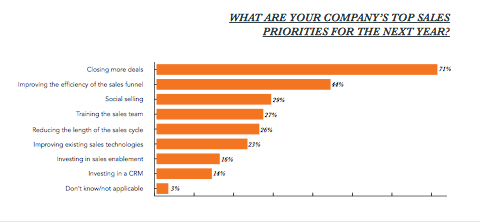
The State of the Business
Here’s something very interesting revealed from the State of Inbound 2017 report – the higher the seniority of the respondent, the more effective they believed their organisation’s marketing strategy to be.

What is the reason for this?
The report offers two possibilities. First, that senior figures are not reporting marketing’s performance adequately to the rest of the team, and are therefore seeing benefits that the rest of the team isn’t. Second, it could be that marketing teams believe that their organisation is not reaching its full potential in terms of marketing, and, for whatever reason, senior figures are blind to it.

Either way, communication is clearly breaking down somewhere. Often, it’s the people on the ground, the individual contributors, who know what would most benefit their organisation, but can find themselves coming up against managerial figures who need more convincing. In light of this, we highly recommend you read our previous post, ‘How to Educate Your Boss on the Benefits of Inbound Marketing’.
Marketing and Sales Alignment
Positive accounts are generally reported in terms of marketing and sales alignment, with only 25% of respondents stating that their organisations are lacking in this area (though a further 10% are unsure).
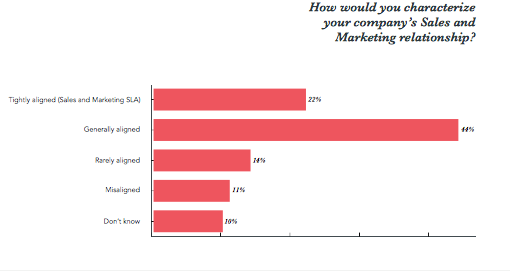
The importance of a good, working relationship between these departments is highlighted by the fact that the better the alignment reported, the more effective the inbound marketing strategy.
This indeed is one of the key takeaways from State of Inbound 2017 – organisations perform better when traditionally siloed departments are merged to create a functioning and communicating whole. What’s more, the better the alignment, the larger the sales team, indicating that more sales are being made and the company is growing.
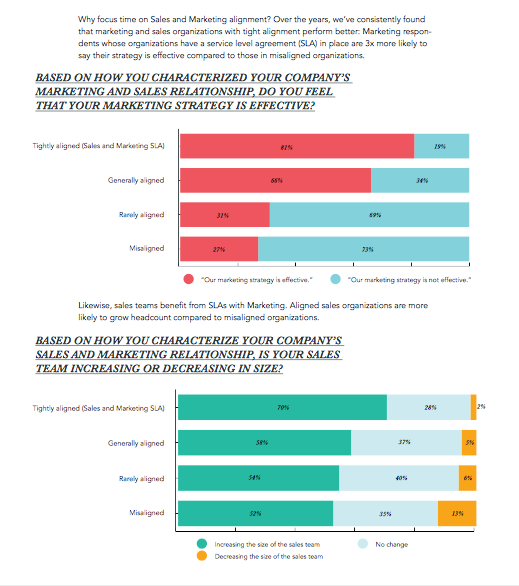
The Marketing Business
While there is a clear indication that inbound marketing produces higher ROI than outbound marketing, 41% of business were either unable to answer the question or otherwise unable to calculate ROI. This is slightly concerning – the inability to calculate ROI means that it will be almost impossible for marketing teams to command bigger marketing budgets, know a successful channel from an unsuccessful one, or indeed prove their value in the first place.
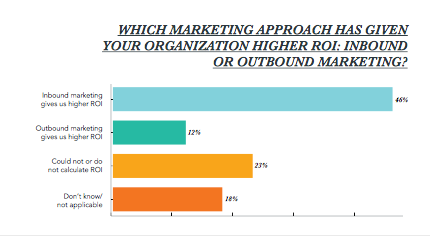
Nonetheless, it is clear that inbound marketing practices are consistently providing the highest quality leads across the board – if you’re struggling to calculate your marketing ROI, now is the time to address the issue.

Looking to the Future
Video is cited as the main inbound marketing disruptor today, with VR (virtual reality) and AI (artificial intelligence) expected to be the next big things that will shake up the industry.
Social media is cited as being the constant, steady disruptor, though it is noted that the rise of messenger apps is causing come change of focus.
As such, an increasing focus is being placed on YouTube and Facebook video in particular, with Instagram and messenger apps not far behind.

Understanding the Modern Buyer
The biggest insight to take away from State of Inbound 2017 in terms of the modern buyer is that word-of-mouth recommendations are still the most powerful influence over purchase decisions.
This means that it is an organisation’s existing customer base that is their most valuable marketing asset – it is your customers advocating your services and products that will lead to more sales. Look after them.
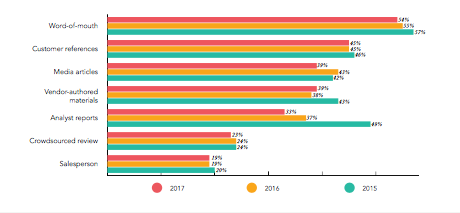
How People Like to Communicate
Good old email is still the preferred communication channel for 86% of respondents.
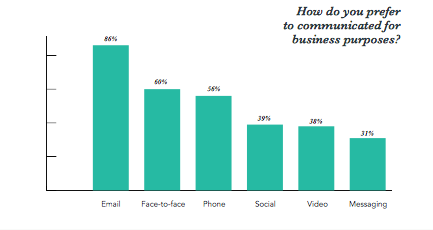
As for social media, Facebook retains the top spot as might be expected. But it must be noted that LinkedIn actually comes up trumps in terms of professional use.
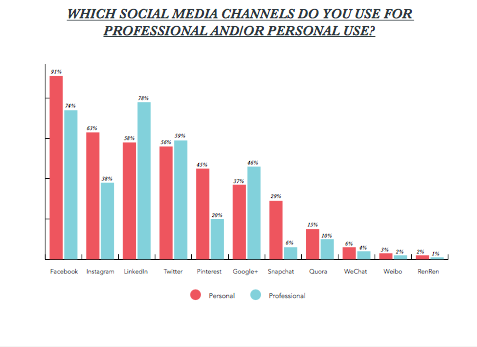
10 Mind-Blowing Statistics from State of Inbound 2017
Ok, so that’s our executive summary of State of Inbound 2017.
We’ll conclude by listing 10 of the most important inbound marketing statistics revealed in the report for ease of reference.
- 70% of marketers cite converting leads into customers as their top inbound marketing priority for 2017
- Outbound marketing is overwhelmingly deemed as the most overrated marketing practice – cited by 32% of marketers
- Only 61% of respondents felt that their organisation’s marketing strategy was effective – there’s more work to be done
- 66% of organisations now have a good or excellent alignment between sales and marketing departments – great progress
- 81% of organisations with tight sales and marketing alignment report effective marketing
- 46% of marketers report that inbound marketing gives them the highest ROI – though, worryingly, 41% cited uncertainty about ROI calculations
- 59% of respondents said that it was inbound marketing practices that brought in the highest quality leads
- Word-of-mouth retains the most power over purchase decisions – cited by 54% of respondents in 2017
- 86% of marketers still prefer email as their primary communication channel for professional purposes
- LinkedIn is the most-used social media channel for professionals, favoured by 78% of respondents
At Incisive Edge, we primarily conduct inbound marketing and take pride in our accomplishments within it. If you want to know more about the State of Inbound 2017, you can download the full report here – and if you need help with any of your inbound marketing practices, please get in touch with us here at Incisive Edge.







